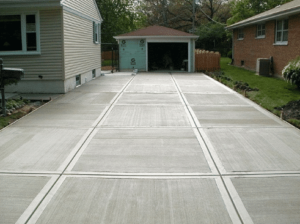A general contractor turns the visions and renderings of architects, engineers, and interior designers into real-world building projects. They obtain building permits, arrange city inspections, and oversee construction.
They also track and maintain the construction pace, manage change orders, and negotiate with suppliers, subcontractors, and contractors. They should be skilled at juggling the myriad details of the project to keep it on target. For more information, click the link https://www.alphaelitecontracting.com/ provided to proceed.

Many states require contractors to meet specific requirements to work on construction projects. These requirements generally include being licensed, meeting insurance, tax, and bonding requirements, and following industry standards. Licensing requirements vary by state and are often divided into categories based on the type of projects that can be completed. For example, a commercial general contractor will be responsible for building hotels, car washes, grocery stores, and other similar commercial properties. In contrast, a residential general contractor will be responsible for new home construction or remodeling existing homes.
While some contractors may want to avoid obtaining a license, this is unavoidable for anyone who wants to perform large-scale construction. Getting licensed will help contractors establish themselves as legitimate businesses and will also allow them to secure more clients. In addition, being licensed ensures that a project is completed according to contract stipulations and protects all parties involved.
The process of obtaining a general contractor license varies by state, but most require applicants to pass business and trade exams, provide proof of their work history, and submit references. Some states will also require an applicant to present a certain amount of net worth or have a certified financial statement prepared by a CPA. Some will also require a background check. In addition, most state licensing offices require a candidate to carry insurance, such as general liability, workers’ compensation, and general commercial umbrella insurance.
A general contractor’s contractor’s role is significant, requiring a high level of knowledge in all aspects of the construction process. For this reason, GCS needs to stay up-to-date on the latest construction trends and technology. This will ensure that they can complete projects on time and within budget.
As a business owner, you know that a successful construction project depends on everyone in the chain getting paid on time. However, ensuring that all payments are made properly and on time can be challenging, especially when working with subcontractors who may have varying requirements for lien waivers and payment terms. Fortunately, there are ways to streamline the payment process and reduce non-payment risk.
If you’re planning a major construction project, such as a new build or remodel of an existing home, it’s wise to consult a general contractor before beginning the process. They’ll be able to provide guidance and help keep the project on track.
GCs are responsible for turning the designs and renderings of architects, engineers, interior designers, and other professionals into reality. This includes ensuring that the building site is safe, meeting deadlines, and working closely with subcontractors to ensure all work is completed on schedule and per design specifications.
One of the most important aspects of a GC’s role is ensuring that the materials and artistry used on a project are high quality. This is especially crucial for larger builds. GCs will often source and coordinate subcontractors who are specialists in particular fields like roofing, painting, or flooring. Having the right subcontractors on hand can ensure timely scheduling, saving a project time and money.
Another important aspect of a GC’s GC’s role is that they will usually be the primary point of contact between contractors and the project owner. They will verify that all work is complete and done to specifications before disbursing payments to any tradesmen involved in the project.
In addition to their management responsibilities, a general contractor will perform many hands-on tasks required to complete a building project. This is typically the case for large projects, such as new builds and large renovations of commercial or residential spaces.
Whether performing their construction or using subcontractors, GCs will likely be required to file a business tax return and abide by New York’s labor laws. In some cases, they may be required to obtain a construction license to work in specific areas of the city or state.
As a contractor, you must also carry workers’ compensation insurance if you have employees. The amount you need will vary by state, but it is generally a minimum of $50,000. You should also check with your local authorities for more information about licensing requirements.
When starting a general contracting business, you must obtain the necessary licensing and insurance before seeking clients. A business plan is also a necessity and helps guide your business goals. It will help you determine what types of projects you want to pursue, how much money you will need to start your business, and project how much profit you will make over time. It is also helpful to know your local zoning regulations. You may need to acquire a building permit or a construction license before working on a job site. It would help if you also researched Occupational Safety and Health Administration (OSHA) regulations to ensure you are up-to-date on your company’s safety requirements.
When you are ready to begin working on projects, starting small and working your way up is a good idea. This will allow you to build a client list and create a reputation for your business. It’s also a great way to test your skills and build a network of relationships. Reach out to your existing friends, family, and coworkers for referrals. You can offer a discount on your next job or give a free gift like an e-book or report in return for a referral.
The main role of a general contractor is to oversee the day-to-day operations of a construction site, manage vendors and tradespeople, and communicate with all parties throughout a project. This includes managing changes to the architectural and engineering plans, finance adjustments, and legal modifications.
GCs also have the experience and expertise to troubleshoot issues during a build, keeping projects on track to remain close to budget, timeline, and dreams. They are often the liaison between the homeowner and contractors, ensuring both sides are clear on expectations and the project stays on target.
GCs also take on the risk of payment delays, as they are responsible for distributing advances from a lender to subcontractors and vendors. Streamlining paperwork, maintaining open lines of communication, and helping transparency on payment terms speed up payments and avoid delays.
Many states require general contractors to have liability insurance to protect themselves and their clients against accidents or damages. Typically, clients, commercial landlords, and lenders will ask for proof of this insurance before hiring a contractor. It is also a good idea for any business to carry this type of coverage. Even if the odds of you having a claim are low, these policies can help you pay for any legal fees or settlements that may arise.
The types of insurance a general contractor needs will vary depending on the specifics of their industry and projects. Usually, these policies will include general liability, commercial auto, and workers’ compensation insurance. Other options include professional liability, pollution, environmental, business interruption, and inland marine coverage. In some cases, contractors may need to purchase a commercial umbrella policy to increase the limits of their other policies.
As a general contractor, you often have subcontractors working on your projects. These contractors are independent businesses that may or may not have their insurance coverage. To protect yourself against liability claims, you should also get a worker’s comp policy for your subcontractors. This will safeguard if a worker is injured on the job.
In addition to protecting yourself from third-party injuries and property damage, you should have a general liability policy covering false advertising, libel, and copyright infringement. If a client thinks you made a mistake in providing services, this type of insurance can help pay for legal fees and court settlements.
Lastly, any general contractor in New York should have a commercial auto policy to protect their vehicles. This covers the cost of any repairs or replacements to your cars, trucks, and vans related to work-related activities. It can also cover any lost income if your vehicle cannot be driven for some reason.
Some companies specializing in general contractors’ business insurance will offer customizable packages with affordable starting premiums. For example, Next Insurance offers a general contractor package that includes tools and equipment, commercial auto, builder’s builder’s risk insurance, and workers’ compensation. It also provides a variety of discounts, including a free online quote and application process.



